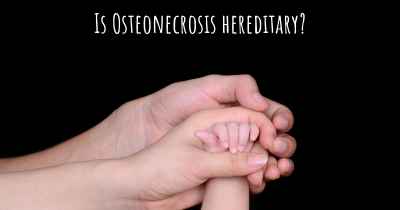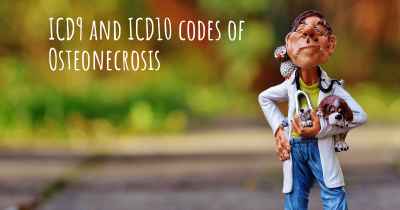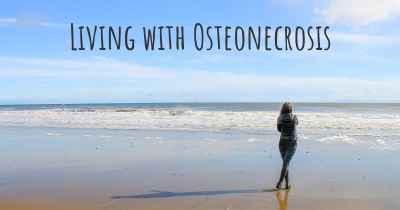What is the history of Osteonecrosis?
When was Osteonecrosis discovered? What is the story of this discovery? Was it coincidence or not?

Osteonecrosis, also known as avascular necrosis, is a condition characterized by the death of bone tissue due to a lack of blood supply. This condition can affect various bones in the body, but it most commonly occurs in the hip, knee, shoulder, and jaw.
Historical Background:
The history of osteonecrosis dates back several centuries, with early descriptions of the condition found in ancient medical texts. However, it wasn't until the 19th century that significant advancements were made in understanding its causes and treatment.
19th Century:
In the early 1800s, French physician Jean Cruveilhier made important observations regarding the pathology of osteonecrosis. He described the presence of dead bone tissue and the subsequent collapse of affected joints. Cruveilhier's work laid the foundation for further research into the condition.
20th Century:
During the early 1900s, German physician Julius Wolff proposed the concept of bone remodeling, which revolutionized the understanding of bone physiology. His theories helped explain the relationship between mechanical stress and bone adaptation. This understanding played a crucial role in later research on osteonecrosis.
In the mid-1900s, advancements in medical imaging techniques, such as X-rays and later MRI scans, allowed for better visualization of bone structures and the identification of osteonecrosis. This led to improved diagnosis and monitoring of the condition.
Causes and Risk Factors:
Osteonecrosis can be caused by various factors, including trauma, excessive alcohol consumption, long-term use of corticosteroids, certain medical conditions, and treatments like radiation therapy. However, the exact mechanisms by which these factors lead to bone tissue death are still not fully understood.
Some individuals are more susceptible to osteonecrosis due to certain risk factors. These include age (as the condition is more common in middle-aged and older adults), gender (men are more commonly affected), certain genetic factors, and certain medical conditions like sickle cell disease and lupus.
Treatment and Management:
The treatment of osteonecrosis depends on various factors, including the stage of the condition, the affected bone, and the underlying cause. In the early stages, conservative approaches such as pain management, physical therapy, and lifestyle modifications may be recommended.
If the condition progresses or causes significant joint damage, surgical interventions may be necessary. These can include core decompression (removal of a portion of the affected bone), bone grafting, joint replacement, or osteotomy (repositioning of bones to relieve stress on the affected area).
Current Research and Future Directions:
Osteonecrosis remains an active area of research as scientists strive to better understand its causes, develop more effective treatments, and improve patient outcomes. Current research focuses on exploring the role of genetics, vascular factors, and cellular mechanisms in the development and progression of the condition.
Additionally, advancements in regenerative medicine, such as stem cell therapy and tissue engineering, hold promise for the future treatment of osteonecrosis. These approaches aim to regenerate damaged bone tissue and restore normal joint function.
Conclusion:
Osteonecrosis has a long history, with significant progress made in understanding its causes, diagnosis, and treatment over the years. While there is still much to learn about this condition, ongoing research offers hope for improved management and outcomes for individuals affected by osteonecrosis.
Although the disease called osteonecrosis was discovered in Egyptian mummies, there is a lack of information available in understanding and treating this disease. The word osteonecrosis comes from a combination of two words which mean that part of the bone is no longer alive and cannot regenerate itself due to a lack of blood supply.
In most cases, the disease attacks people in their late thirties and forties for the first time. If left untreated, it will eventually destroy the joint, thereby requiring a joint replacement. It is estimated that 10% of all hip replacements performed in the United States are due to osteonecrosis (also called avascular necrosis). Although osteonecrosis is not life threatening, it is extremely debilitating, especially when you consider the age factor.
The juvenile version of osteonecrosis is known as PerthesDisease and usually afflicts children from ages four through twelve.
Posted Jun 16, 2017 by Austin 4830
In most cases, the disease attacks people in their late thirties and forties for the first time. If left untreated, it will eventually destroy the joint, thereby requiring a joint replacement. It is estimated that 10% of all hip replacements performed in the United States are due to osteonecrosis (also called avascular necrosis). Although osteonecrosis is not life threatening, it is extremely debilitating, especially when you consider the age factor.
The juvenile version of osteonecrosis is known as PerthesDisease and usually afflicts children from ages four through twelve.
Posted Jun 30, 2017 by Dave 2270
Posted Jun 11, 2018 by Megan 2500
Posted Nov 13, 2018 by Scott 3050
Posted Feb 28, 2020 by Lisa j 1700
The first detailed description of idiopathic avascular necrosis in bilateral femoral heads was a paper written by Ernst Freund in 1938.
Posted Mar 15, 2020 by Caitlin 3050








